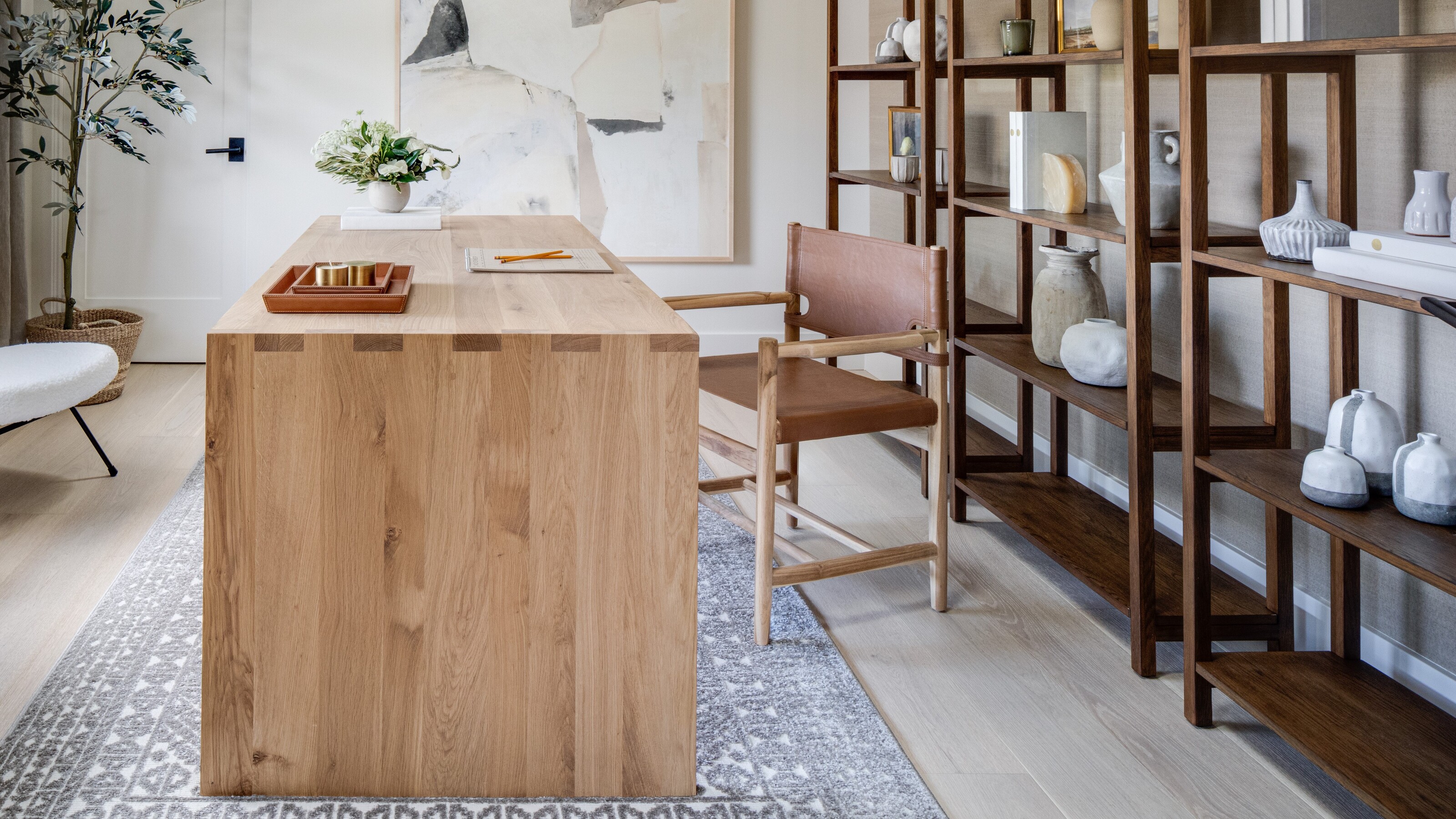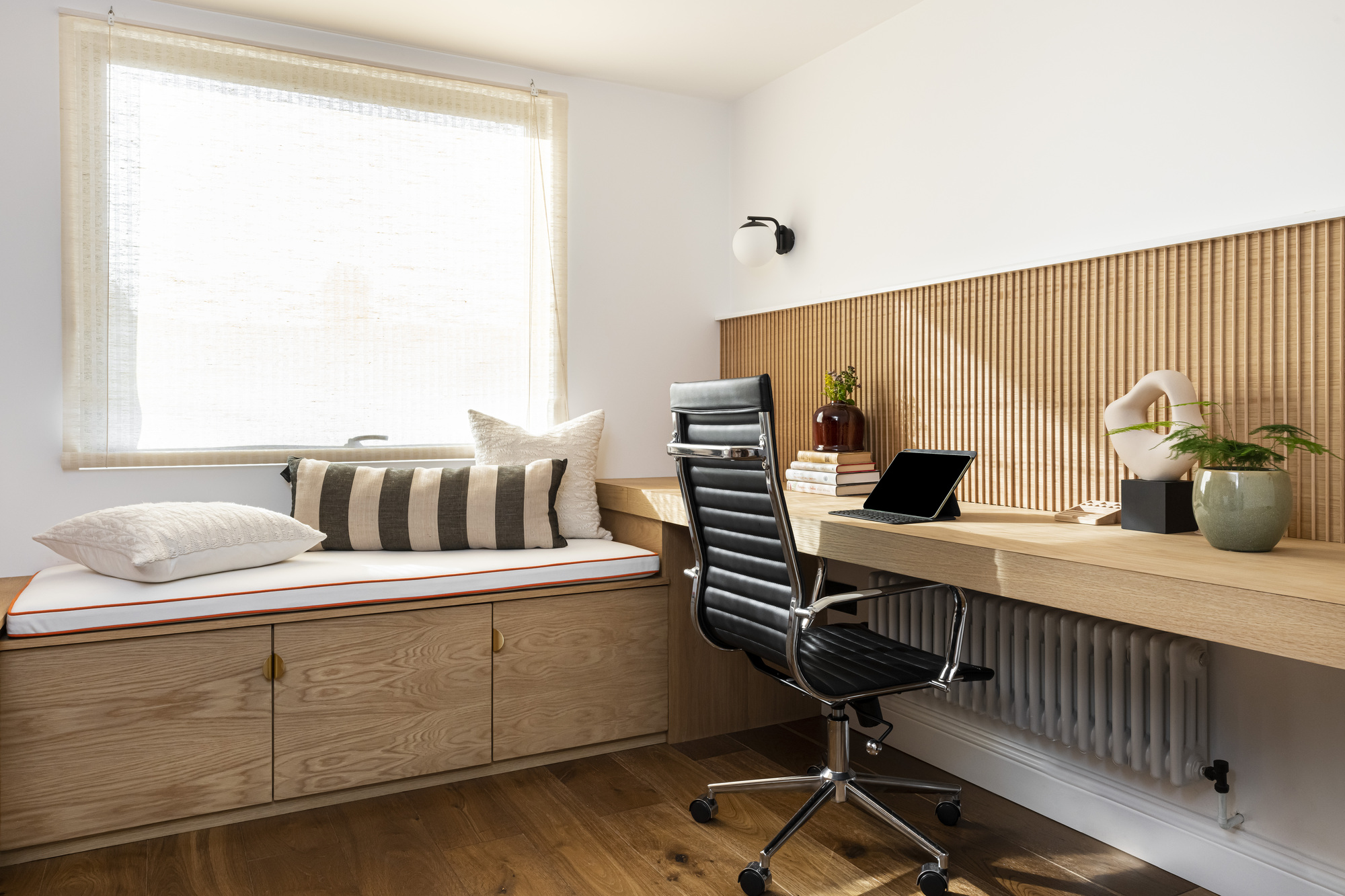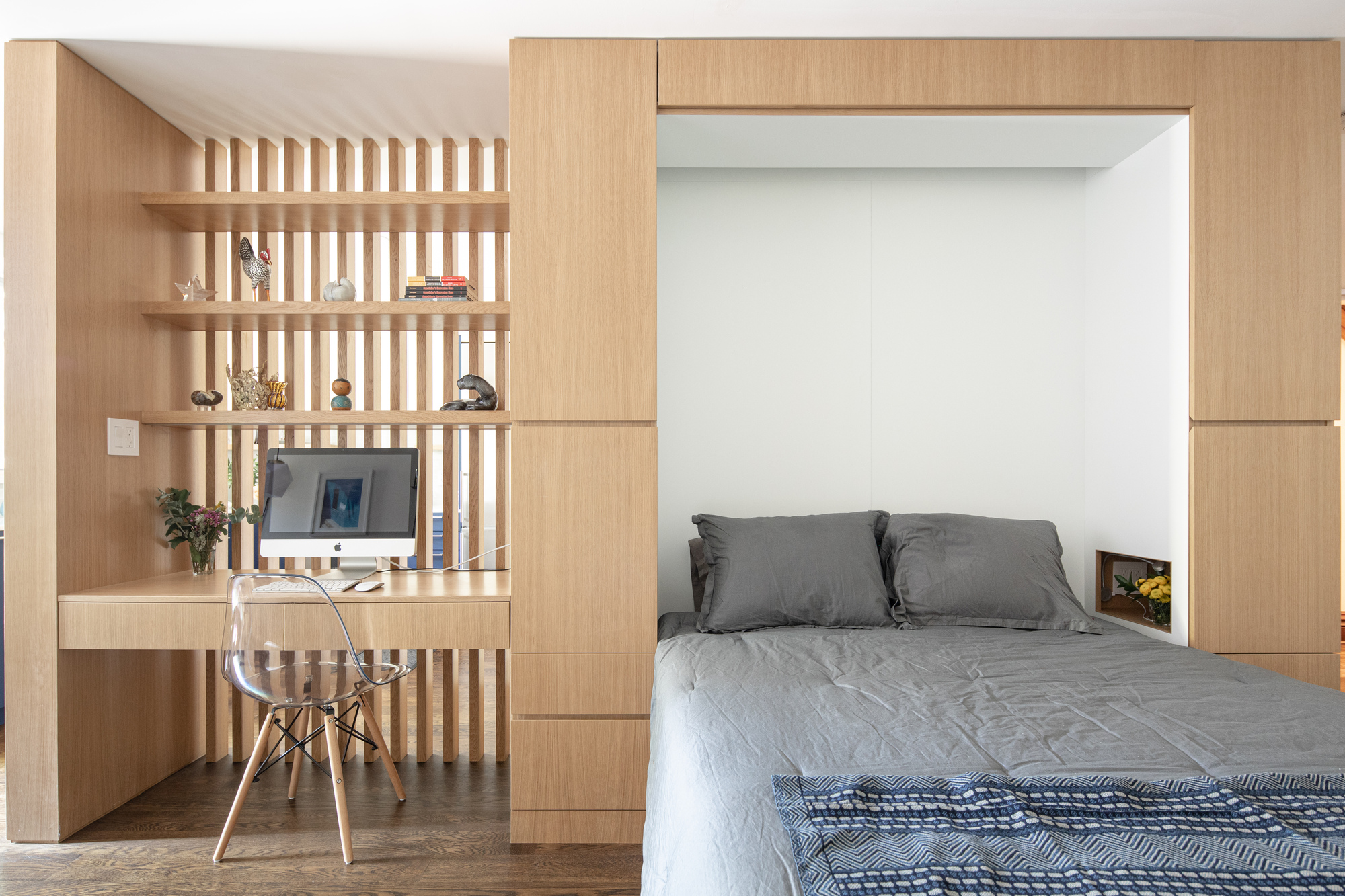What's a good home office size? The need to know measurements, from floorplans to furniture
The right home office size is essential to make working from home comfortable. Get the right dimensions, from the best desk size to making the most of small spaces


Getting your home office size perfectly proportioned is quite the challenge, and when space is at a premium you have to get creative with your ideas and think outside the box. It's crucial in this day and age of working from home that you have a dedicated space in your house that can be easily set up for home working, but think about how all your pieces of furniture come together, how they fold away at the end of the day, and what kind of space you want your home office to be.
Every inch of your home office space should be chosen carefully, from your chair, to the desk, to the storage solutions, and the size of these key pieces of furniture matters. If executed correctly, you can create the perfect work-from-home environment to stimulate you creatively. Here are the small home office ideas and sizes to note down when planning your working from home space.
What is the standard home office size?
Home offices come in all shapes and sizes. People are now forgoing their spare guest room and turning it into a home office, but others are using any spare corner of the house as a home office - a desk in a hallway, a spot in a bay window, so really, the standard size really varies greatly.
A typical home office could be anything from 50 square feet - a small, unused part of the home, to 150 square feet - a spare guest room that has undergone a new lease of life. Think about the size of your designated space first before and do some measurements before you plan what furniture and home office organization ideas you're going to fill it with.
1. Picking the right chair size for your home office

First thing's first, the best office chair is of utmost importance. It's a hard purchase to get right as you want the chair to prioritize both substance and style. That means striking the balance between buying an oversized, clunky and aesthetically awkward office-style chair that's good for your posture, and a stylish seat that doesn't provide any ergonomic support at all. The perfect chair is stylish let supportive.
Think about how you use the space when considering the size of your chair. Are you a fidget who might want to move around the room on wheels, do you want to sit back and stretch your legs out. Deciding on your priorities will help you decide how much space you can devote to your office chair.
When considering the measurements, the seat depth of an ergonomic home office chair should allow the user to sit with their backs against the backrest, while the space between the back of the knees and the seat of the chair needs to be between two-four inches.
The Livingetc newsletters are your inside source for what’s shaping interiors now - and what’s next. Discover trend forecasts, smart style ideas, and curated shopping inspiration that brings design to life. Subscribe today and stay ahead of the curve.
The office chair has to be adjusted by a person’s characteristics (height, weight). The difference in height between the office desk and office chair should be around 10-12 inches,' says Giovanni Patania, lead architect and co-founder at Windsor Patania Architects.
'The key to all good chairs is movement, forwards-and-backward, side-to-side, up-and-down, the more movement the better,' advises Lucinda Newbound, senior ergonomics advisor at Back in Action.
'We call this active sitting. Once you achieve active sitting your core muscles will become stronger and you will find your posture will improve overnight, joints will be less stiff, and you will become more focused and have higher concentration levels.'
2. Get your desk size right

When choosing the best desk for you, think about how your desk size works with your chosen chair and overall scheme and make sure your desk has enough leg room, space for your work computer or laptop.
Your home office desk should be between 29 and 30 inches in height, but in terms of surface space, there is more fluctuation nowadays. This is because the majority of us are used to working from home and a flexible working life, meaning we pack up our offices at the end of the day and use laptops or tablets, so with that, there is no pressing need for your desk to take up lots of space.
Buying a flexible, smaller desk at the correct height should help you make the most of your space. Think console desks, laptop desks, foldable desks or L-shaped corner offices that offer other alternatives and help you live a flexible life. Standing desks are also gaining popularity and can take up less space in a small office. 'The biggest thing we have seen change is the uptake of electric standing desks,' says Lucinda. 'These are commonplace in most Scandinavian countries where there has always been a big ‘look after your staff’ culture.'
'To find the perfect desk size for you, start by accounting for items like your computer, mouse, keypad, and landline phone and then calculate the room for other accessories and space to write and open a binder comfortably,' advises Susana Simonpietri, creative director of Chango & Co.
3. Consider the size of your storage solutions

Think about how the depth and length of your storage solution plays a part in your desk organization ideas and plan accordingly to make your home office seem bigger and unlikely to build up clutter.
You will need space for laptops, chargers, headphones, plugs and notepads and all the typical office accouterments you are used to having when you go into the office, so if you want to sensibly file things away at the end of the evening, draws, cabinets and vertical shelves are helpful to keep the place clutter-free, keep the space looking big and give the room potential to become something else in the evenings - like a TV room or a small at-home library.
Here, VFA Architecture + Design has transformed this home in Ontario with a home office with plenty of shelving above the desk as well as a handy draw - cleverly only taking up one wall.
4. Or think about hidden storage

Think hidden storage too. Utilizing hidden storage is a great way to keep your space decluttered. Think hidden plug sockets and desktops that sink into your desk at the end of the day.
Extra seating in a home office is a luxury if you have space, but if you are lacking in space, there are crafty ways of blending a seating area as a multifunctional piece of furniture - a key space-saving idea.
'Consider how you can make valuable adjustments to allow for additional storage,' say Jen and Mar of Interior Fox. 'Here, we incorporated a built-in storage bench with hidden cupboards, this is seamlessly connected to the desk and therefore not wasting precious space.'
'This additional seating allows for a break away from the desk, frames the window and makes use of previously unused space.' The hidden storage also helps to keep clutter tidied away, allowing for an inviting place to work.
5. Use small corners of the home as an office space

Every inch of your home has the potential to be a pop-up home office space. If you don't have an allocated room for your home office set-up, think about other areas of the house that could double up as a home office with the simple addition of a desk. A part of the hallway, under the stairs, or a mezzanine. You don't need your home office to be a separate room, and you can in fact find a corner of the home to slot a great home office in - a corner of a room, in a hallway. This example in Sherman House by Sonya Lee Architect shows a great example.
'The key to the design of small spaces is the ability to carve out areas for all the different functions of living (and working), while not losing the sense of spaciousness, brightly flooded with natural light and air,' says Sonya.
'Here, we designed a central cabinet that combines a compact desk, built-in storage and a murphy bed. A white oak vertical screen simultaneously offers light to pass through while screening off views from the kitchen. We find the ‘office’ is no longer confined to cubicles and closed-off areas as much as they are spaces that are comfortable, accessible and prioritizing natural light and views.'
6. Light your home office to create an illusion of space

If you are designing a home office in a smaller space, think about how lighting plays a part in your desk ideas. You will want to maximize natural lighting, which is important if you have a small office. Make sure your home office is next to or as close to a window as possible to make sure you're getting as much natural light as you can, helping the room feel larger and stopping you from feeling claustrophobic. In this particular scheme, DHM Architecture has also maximized desk space with a wall-mounted light fixture, taking up as little space as possible but adding extra light as the day turns into evening.
'To make the most of your office desk, invest in an angled task light,' advises Natalie Mann of Iconic Lights. 'It allows you to cast a pool of light or a more focused spotlight as you need it. Remember, the taller the lamp, the further light will travel, so consider how much light you need to illuminate your working area.'
7. Measure up and build in wall storage

When brainstorming home office ideas, also think about using wall space and measuring your wall - there is potential here to build up. 'Anything you can get off the ground and onto the wall is going to create practical space-saving storage,' says Ginger Curtis of Urbanology, who designed this home office. 'This eliminates the need for free-standing bookcases, and file cabinets and creates room for things like extra seating and eclectic gallery walls, as we did in this space.
How to make your home office look bigger
There are many tricks you can do to make your home office space appear bigger than it actually is.
'Using lower profile furniture pieces within the office space is a great way to create the illusion of higher ceilings, thereby giving the appearance of more space,' says interior designer, Nina Magon. 'Low modern furniture works incredibly well in maximizing the perceived height and width of your office space and is also beneficial in respect to the inclusion of natural light, as it does not obstruct the window lines.'
Another tip to make your office space seem larger is painting the molding, walls, and ceiling all the same color and use color in a clever way. 'Instead of breaking up the color of the walls and molding (which causes a disconnect between components), paint them all the same color to keep them cohesive,' encourages Nina. 'The result produces an elongated effect, which in turn creates the illusion of higher ceilings and more space within your office.'

Former content editor at Livingetc.com, Oonagh is an expert at spotting the interior trends that are making waves in the design world. She has written a mix of everything from home tours to news, long-form features to design idea pieces, as well as having frequently been featured in the monthly print magazine. She is the go-to for design advice in the home. Previously, she worked on a London property title, producing long-read interiors features, style pages and conducting interviews with a range of famous faces from the UK interiors scene, from Kit Kemp to Robert Kime. In doing so, she has developed a keen interest in London's historical architecture and the city's distinct tastemakers paving the way in the world of interiors.